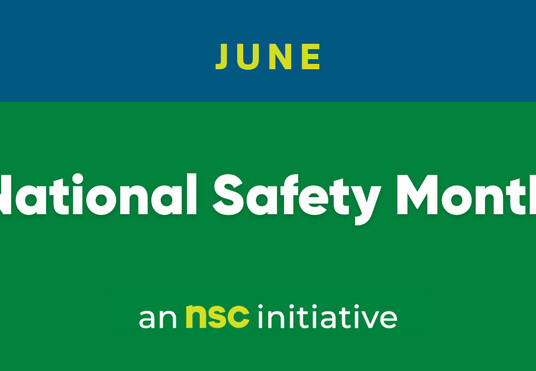May is Motorcycle Safety Awareness Month

Motorcycles are one of the more dangerous vehicles on the road to drive, for many reasons.
They require specific safety equipment to protect riders instead of having a protective structure. They rely on the driver’s balance, expertise, and physical skill to operate safely. They are smaller vehicles, which makes them harder to see. And, while it might seem like common sense to give motorcycles space, the truth is that many drivers aren’t paying enough attention to even see them. This leads to statistics like the 6,218 motorcyclists who were killed in traffic crashes in 2022, making up 15% of all traffic fatalities (NHTSA).
A month of awareness for an important issue
Bringing awareness to the safety of motorcyclists everywhere is incredibly important. Per the NHTSA (all following data), the rate of fatality for motorcyclists was 22 times more than the passenger car occupant rate in 2022, per 100 million miles traveled. 35% of all motorcycle riders involved in fatal crashes in 2022 were speeding, compared to 22% of all passenger car drivers. Additionally, motorcycle riders aged 21 to 24 years old involved in fatal crashes had the highest speeding involvement at 51% in 2022. Numbers continue to climb or remain steady, thus indicating just how serious an issue motorcycle safety is and why a month of awareness for the issue is so important.
What changes could increase motorcycle safety?
While the potential for increasing motorcycle safety is there, the details are harder to come by. In some cases, laws would have to be changed, which often takes considerable time. On the other hand, the success of overall motorcycle and traffic safety is considerably reliant on human behavior. This makes it tricky to enforce rules, regulations, and guidelines. However, there is hope for reducing fatalities of motorcyclists, as the National Roadway Safety Strategy and the Safe System Approach are working hand in hand towards zero fatalities on the road.
The Safe System Approach (mentioned above!) is the main initiative currently in place that is working towards fewer fatalities on US roads. The five facets of the approach are Safer People, Safer Roads, Safer Vehicles, Safer Speeds, and Post-Crash Care. Each facet is unique, but all focus on the facts that “humans make mistakes”, “responsibility is shared”, and “safety is proactive”, among others. This approach prioritizes completely reducing the crashes that result in fatalities and serious injuries and is one giant step forward toward better traffic safety.
Other potential aids are increased helmet use, reduced alcohol-impaired driving, and even lane-splitting and lane-filtering laws.
Increased helmet use
A study of hospital data in the 2013 National Trauma Data Bank compared medical outcomes of helmeted versus unhelmeted motorcyclists involved in a crash. Compared to helmeted motorcyclists, unhelmeted motorcyclists were more likely to be admitted to the Intensive Care Unit (ICU), more likely to need ventilation, and more likely to have clinical indicators of significant/severe injury (Patel et al., 2019).
Motorcycle helmet use increased among motorcycle riders from 64.9% in 2021 to 66.5% in 2022. Similarly, among motorcycle riders with passengers, helmet use increased from 52.1% in 2021 to 58.3% in 2022 (NHTSA). This increase means that more riders and passengers are more protected in the case of a collision.
According to the NHTSA, “Wearing a motorcycle helmet that meets the performance standards of Federal Motor Vehicle Safety Standard 218 (Motorcycle Helmets, 49 CFR Part 571, 2011; “compliant helmet”) is one of the most effective ways to reduce the chance of serious injury or death in a crash.”
Too many motorcyclists on the road forego a helmet. Wearing a helmet (and the enforcement of wearing one) for all drivers and any passengers they may carry, would likely be the most effective change we could hope to see to increase motorcycle safety.

Reduced alcohol-impaired driving
In 2022, 5,934 people operating a motorcycle were killed in traffic crashes; of those motorcycle riders, 1,705 (29%) were drunk (BAC of .08 g/dL or higher). Of the 2,254 motorcycle riders who died in single-vehicle crashes (i.e. no one else was involved) in 2022, 42% were alcohol-impaired (NHTSA).
These percentages are high – too high. While drunk driving is heavily enforced, inebriated drivers still slip through the cracks every day. This particular issue is going to rely on both stricter enforcement and a distinct change in human behavior to be resolved.
Lane-splitting and lane-filtering
Lane-splitting laws, which are currently only legal in California, and lane-filtering laws, of which some variation is legal in states like Arizona, Hawaii, Montana, and Utah, are somewhat controversial regarding safety. When done in line with state regulations they don’t create more danger, but not all states allow the practice, as it doesn’t appear to increase overall traffic safety from an outside perspective. However, it might be a practice that could help increase the safety of motorcyclists in particular.
From the American Motorcyclist Association:
“The AMA endorses lane splitting, given the long-term success in California and the University of California study by Berkley researchers showing that it enhances motorcycle safety. “A motorcycle’s narrow width can allow it to pass between lanes of stopped or slow-moving cars on roadways where the lanes are wide enough to offer an adequate gap. This option can provide an escape route for motorcyclists who would otherwise be trapped or struck from behind. There is evidence (Hurt, 1981) that traveling between lanes of stopped or slow-moving cars (i.e., lane splitting) on multiple-lane roads (such as interstate highways) slightly reduces crash frequency compared with staying within the lane and moving with other traffic.” There has been recent enthusiasm for lane splitting and/or filtering in other states. The AMA endorses these practices—as long as lane splitting is conducted within safe highway speeds—and will assist groups and individuals working to bring legal lane splitting and/or filtering to their state.”
While likely not at the top of the list for country-wide initiatives, lane splitting and lane filtering do have the potential to increase motorcycle safety.
What progress has been made to aid in motorcycle driver safety?
There are always ways to increase the safety of drivers on the road and motorcycle drivers are no exception. Entities like the FHWA, NHTSA, US and State DOTs, and vehicle manufacturers have worked and continue to work tirelessly to prioritize motorcycle safety and make motorcycles safer and easier to drive, even among other road traffic safety initiatives.
Advances in technological safety aids like ABS braking, electronic throttles, adaptive headlights, and advanced assistance systems have all served to increase driver safety in recent years, while motorcycle safety-specific initiatives and awareness campaigns have been presented and put into practice each year. Continued advancement in mechanical and technological safety aids has the potential to continue to make motorcycles safer year after year.
So how can we bring awareness to motorcycle safety?
Individuals use motorcycles as transportation for both leisure and business, and this mode of transport isn’t going away any time soon. Motorcycles are 3% of registered vehicles, but make up 14% of all fatal crashes in a year (NHTSA). May brings about Motorcycle Awareness Month every year, and we can bring awareness to the issue in a few ways.
First, participating in Motorcycle Safety Awareness Month is a great way to highlight the issue to more people. Awareness months actually do engage more individuals and organizations and bring about more safety. The jolt to the system that comes with the bare facts about the dangers of being a motorcyclist is enough to get people to pay more attention, at least for a time.
Second, our own awareness while on the road will go a long way in helping keep motorcyclists safer. While they aren’t as visible as their larger vehicle counterparts, their need to be seen is even greater. Giving motorcycles ample space, being cautious while passing or driving alongside, double checking your blind spots, and remembering that motorcyclists can react more quickly than cars are all going to help keep them safe.
Motorcycle safety for all is possible! With the Safe System Approach, Motorcycle Safety Awareness Month, and intentionality from drivers of vehicles four-wheeled and two-wheeled alike, we can achieve safer roads.
Resources:
Hurt, H.H. Jr., Ouellet, J.V. & Thom D.R. (1981b). Motorcycle Accident Cause Factors and Identification of Countermeasures. (DOT HS 805 862). Washington, DC: National Highway Traffic Safety Administration, page 57. Download the Hurt report here.
Patel, P. B., & et al. (2019, May 9). Unhelmeted motorcycle riders have increased injury burden: A need to revisit universal helmet laws. Journal of Surgical Research. https://www.sciencedirect.com/science/article/abs/pii/S0022480419301404


